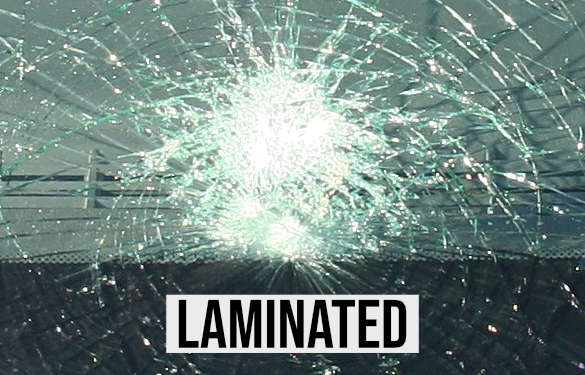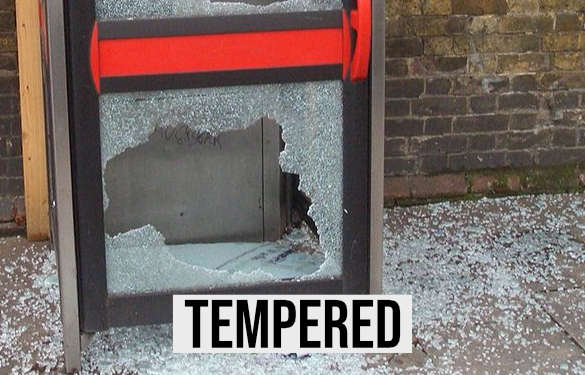
Different Types Of Windscreens
The two most common types of safety glass used for vehicles in the UK is tempered glass and laminated glass.
They both serve roughly the same purpose but each version has slight differences when you compare the two types.
It’s also important to note for this article that newer car models are pushing more towards having all windows made of laminate.
How Is Laminated Glass Used On Vehicles?

Laminated glass is created from a process of extreme heat and high pressure that is applied to two pieces of glass and a transparent plastic called PVB.
This type of method allows the glass to shatter but remain in one piece.
This allows your windscreen to become a structural part of the vehicle and is slightly safer than tempered glass in a high-speed collision.
In fact, airbags can bounce off the laminated glass when it is deployed and shouldn’t suffer any damage from broken shards of glass.
Laminated glass is typically the windscreen but can also extend to passenger windows too.
It doesn’t shatter which means it’s harder for a foreign object to pass through the glass, injuring the occupants.
What Is Tempered Glass Used For On Cars?

Laminated glass is created by heating annealed glass to around 600°C and then undergoes a high-pressure cooling procedure called quenching.
Tempered glass is usually used for the passenger windows of your vehicle.
It’s designed to shatter upon impact but the fragments aren’t sharp or jagged.
This means during a collision you’re less likely to end up with thousands of cuts but you’re more likely to end up going through a window.
Laminated vs Tempered Glass
In all honesty there isn’t much to debate between the two in terms of popularity.
Laminated windows are now becoming an add-on for more expensive vehicles as it’s harder to break in to.
They’re also harder to escape from.
If your vehicle ends up underwater, a glass breaking hammer might not help because the windows shatters but stays where it is.
You would then have to kick your way out or rely on the weight of the water to come rushing in.
Laminated glass can be repaired to a point making them a good choice for most drivers.
Tempered glass is cheaper and weighs less than laminated glass meaning it’s more economic.
The shattered fragments aren’t sharp and has always been a popular options for manufacturers.
Tempered is a safer option if you knew your vehicle will end up being submerged underwater but laminate probably wins on.
How Will I Know If My Window Is Tempered Or Laminated?
You can check the label printed on the bottom corner of your vehicle.
These labels can be quite confusing as not manufacturers display all the same information.
Essentially if it says laminate on the glass then it’s laminate.
If it doesn’t, it’s usually tempered unless the vehicle is quite old.
Summary
All in all, we would say that laminate is a safer option when compared against tempered.
The only real downside is using a vehicle escape tool might not help if you’re submerged or the vehicle is on fire as you would still need to kick the window out.
Whilst tempered glass is lighter and more efficient for fuel consumption laminated glass is more effective during a high speed collision.
Related Articles
Author: Dean Michael

